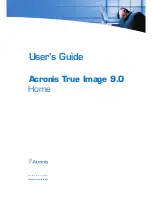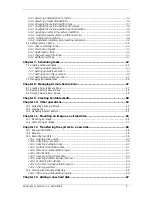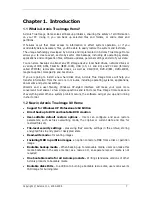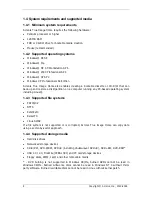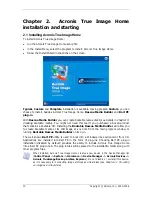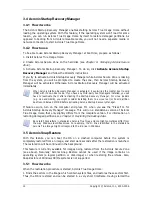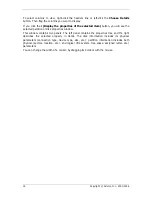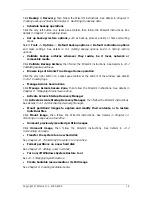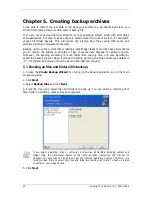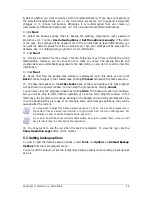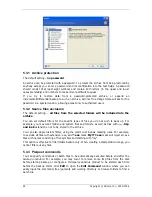
3.4 Acronis Startup Recovery Manager
3.4.1 How it works
The Acronis Startup Recovery Manager enables starting Acronis True Image Home without
loading the operating system. With this feature, if the operating system won't load for some
reason, you can run Acronis True Image Home by itself to restore damaged partitions. As
opposed to booting from Acronis removable media, you will not need a separate media or
network connection to start Acronis True Image Home.
3.4.2 How to use
To be able to use Acronis Startup Recovery Manager at boot time, prepare as follows:
1. Install Acronis True Image Home.
2. Create Acronis Secure Zone on the hard disk (see
Chap er 8. Managing Acronis Secure
Zone
).
t
3. Activate Acronis Startup Recovery Manager. To do so, click
Activate Acronis Startup
Recovery Manager
and follow the Wizard’s instructions.
If you try to activate Acronis Startup Recovery Manager while Acronis Secure Zone is missing
from the system, you will be prompted to create the zone,
then Acronis Startup Recovery
Manager will be activated. Otherwise, Acronis Startup Recovery Manager will be activated
immediately.
When Acronis Startup Recovery Manager is activated, it overwrites the master boot record
(MBR) with its own boot code. If you have any third-party boot managers installed, you will
have to reactivate them after activating the Startup Recovery Manager. For Linux loaders
(e.g. LiLo and GRUB), you might consider installing them to a Linux root (or boot) partition
boot record instead of MBR before activating Acronis Startup Recovery Manager.
If failure occurs, turn on the computer and press F11 when you see the "Press F11 for
Acronis Startup Recovery Manager" message. This will run a standalone version of Acronis
True Image Home that only slightly differs from the complete version. For information on
restoring damaged partitions, see
Chapter 6 Restoring the backup data
.
.
Be careful! Disk letters in standalone Acronis True Image Home might sometimes differ from
the way Windows identifies drives. For example, the D: drive identified in the standalone
Acronis True Image might correspond to the E: drive in Windows.
3.5 Acronis Snap Restore
With this feature you can boot the OS on a crashed computer before the system is
completely restored from an image, and start work seconds after the restoration is launched.
The restoration will be continued in the background.
This feature is currently available for images being restored from the Acronis Secure Zone
(see above). Naturally, Acronis Snap Restore cannot be used if the image contains no
operating system (a logical partition or disk image) or when restoring file archives. Also,
Snap Restore of Windows 98/Me systems is not supported.
3.5.1 How it works
When the restoration procedure is started, Acronis True Image Home:
1. Finds the sectors in the image which contain system files, and restores these sectors first.
Thus, the OS is restored and can be started in a very short timeframe. Having started the
14 Copyright © Acronis, Inc., 2000-2006

